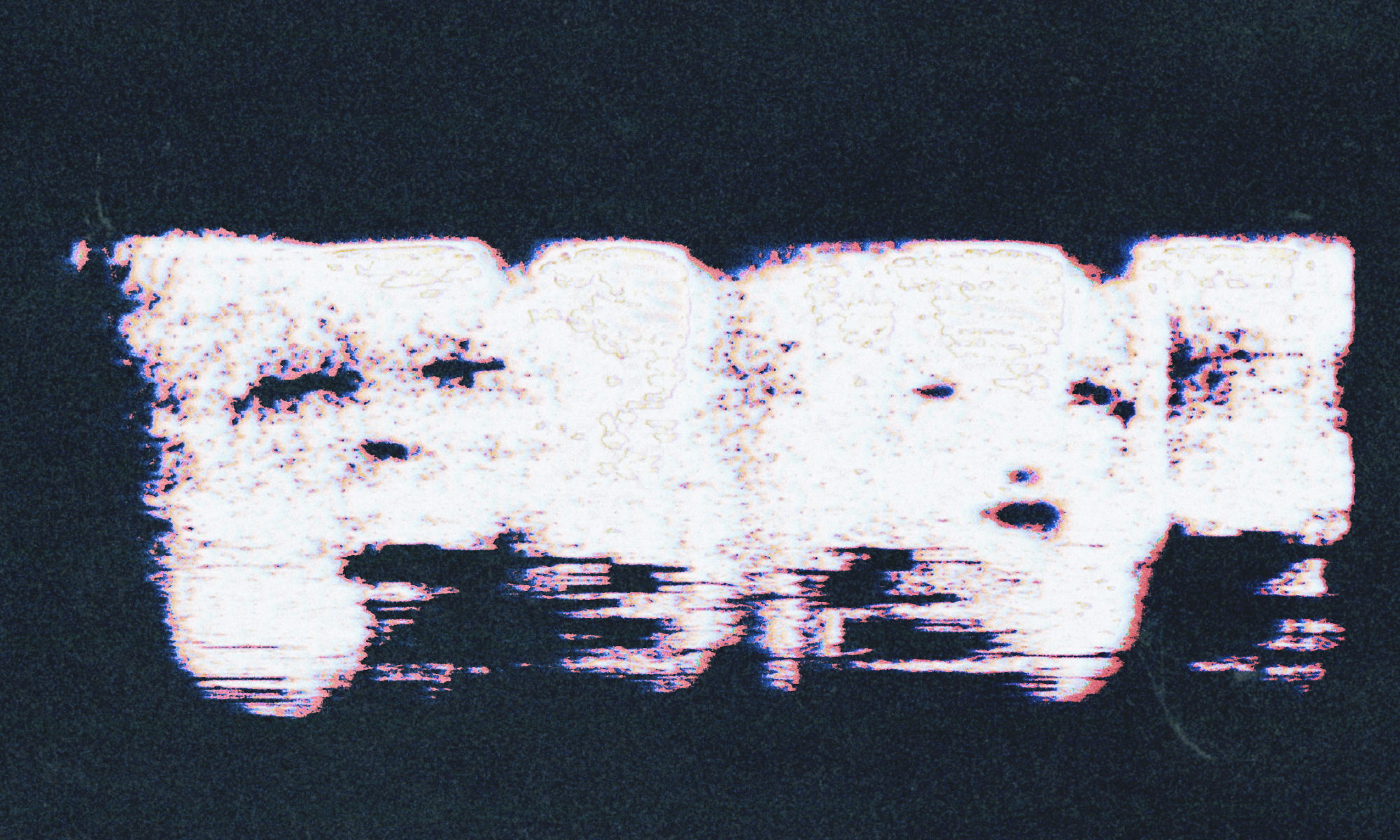Daily Making
For our second prompt we were asked to work closely with a “material” for two weeks, creating a close and creation based daily practice. My initial thoughts were to create a daily making practice around an area of creation that I had been exploring over the past six or so months, which was graffiti.

The first day I drew and created some graffiti characters and a thowie. Upon some reflection after starting this, I couldn’t help but feel as if this wasn’t the type of project focus I wanted in my masters. Interestingly enough this prompt landed right in between the first anniversary of my Mothers passing, and my Fathers birthday who passed away in 2014.
During this period, I was very emotional, and for the first time in my creative life I decided I wanted to lean into the intense and heavy feelings of grief that I was and continue to experience on a daily basis. I started my exploration on how to create a daily making practice within this theme, by reflecting and doing extensive full listens of the album By the Time I get to phoenix by experimental hip-hop trio Injury Reserve.
By the Time I get to Phoenix
Injury Reserve 2021

By the Time I get to Phoenix is the second and final studio project by Arizona hip-hop group Injury reserve. This complex gut-wrenching album explores heavy themes of grief with the passing of fellow member Stepa.J Groggs, who died during the recording of the project. The album has been hailed as the beginnings of “post-rap” with its experimental production, hazy and paranoid flows, and extremely tight pacing.
This album was a huge inspiration to me during this project not only because of the interesting and deeply personal ways grief is tackled and presented throughout the whole project, but also the creative process of the surviving members especially Ritchie with a T. It is important to note that for almost all the recorded verses you hear on the album by Ritchie are recorded in a completely pitch-black room. Ritchie expressed that this was the best way to get into a space that symbolizes the dark despair of what grief feels like. I believe this method is what helps with some of the incredibly raw flows, and the emotional texture of the album.
The process that Ritchie used was something that I wanted to try myself, and it ended up shaping this entire prompt and heavily influenced my daily making.

Daily Making Process: Conversations
I contemplated a couple ideas around how exactly I would approach this theme, but I ended up by recording conversations with myself, but being sure to incorporate Ritchie’s process in some way. I decided to create somewhat of a sensory deprivation room in my apartment bathroom. I did this by sealing the light around my doorways to create a completely black room, wearing a blindfold, noise cancelling headphones, and stripping completely naked. This process not only symbolized that dark hole of grief I wanted to talk about and enter into, but also made me completely disassociate with the outside world and remain completely vulnerable. I would then record myself for 15 minutes basically having a conversation with myself about various themes of grief, reflecting on life so far and questions about death and the afterlife.
Daily Making Process: Audio Visualization
The next step of my process was audio visualization. Once I imported the recording to my computer I would play with different styles of audio visualization, looking at wave forms in various programs. I started with Live 3D audio visualization with a plug-in called sndpeek, which made these beautiful terrain-like valleys and peeks and interacted live with the audio. Though I did love the aesthetic of the program, it felt limited in its possibilities. I then moved into a program I was slightly familiar with: Adobe Audition.

Adobe Audition has several excellent ways of visualizing sound with waveforms, and beautiful spectrums of colours and textures. I loved how the shaped felt so organic and natural opposed to the static and ridged nature of sndpeek. The three main waveforms I was exploring on the application were basic waveform, spectral frequency display and the spectral pitch display. I found the most success with the spectral frequency display and the spectral pitch display because you are able to expand them exponentially, to see these beautifully unique forms. I would save these forms in segments and experiment with them in photoshop.
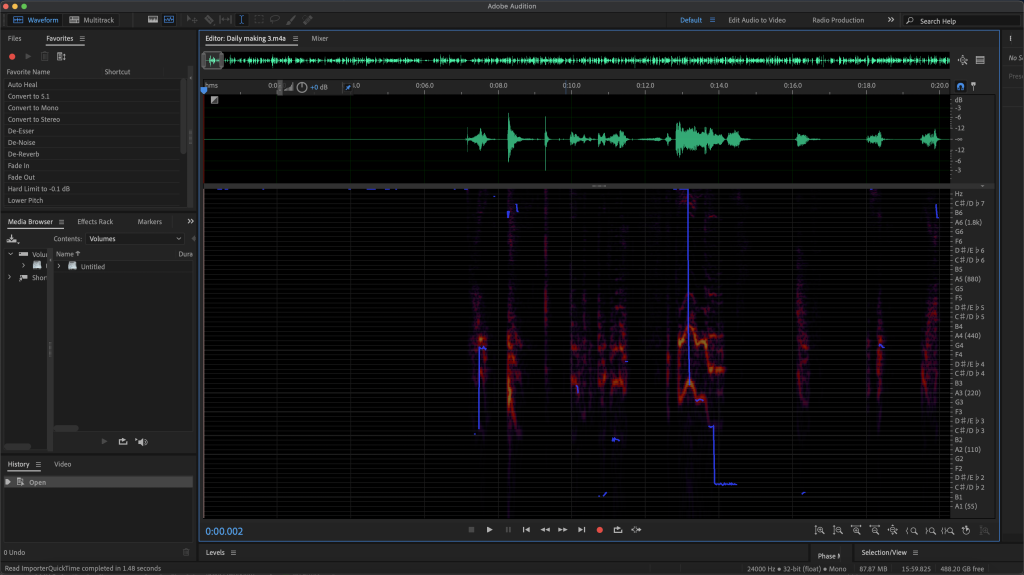
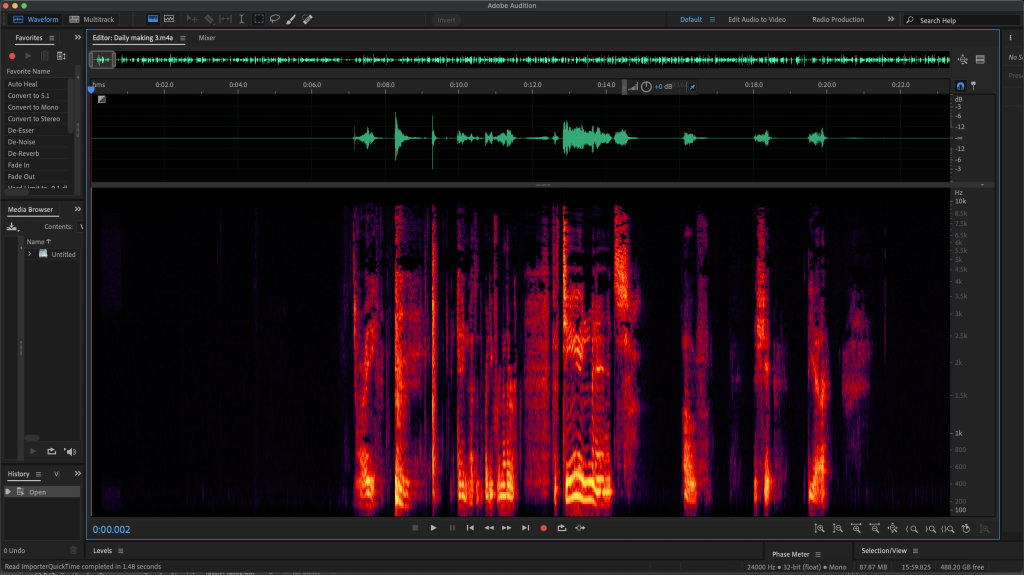
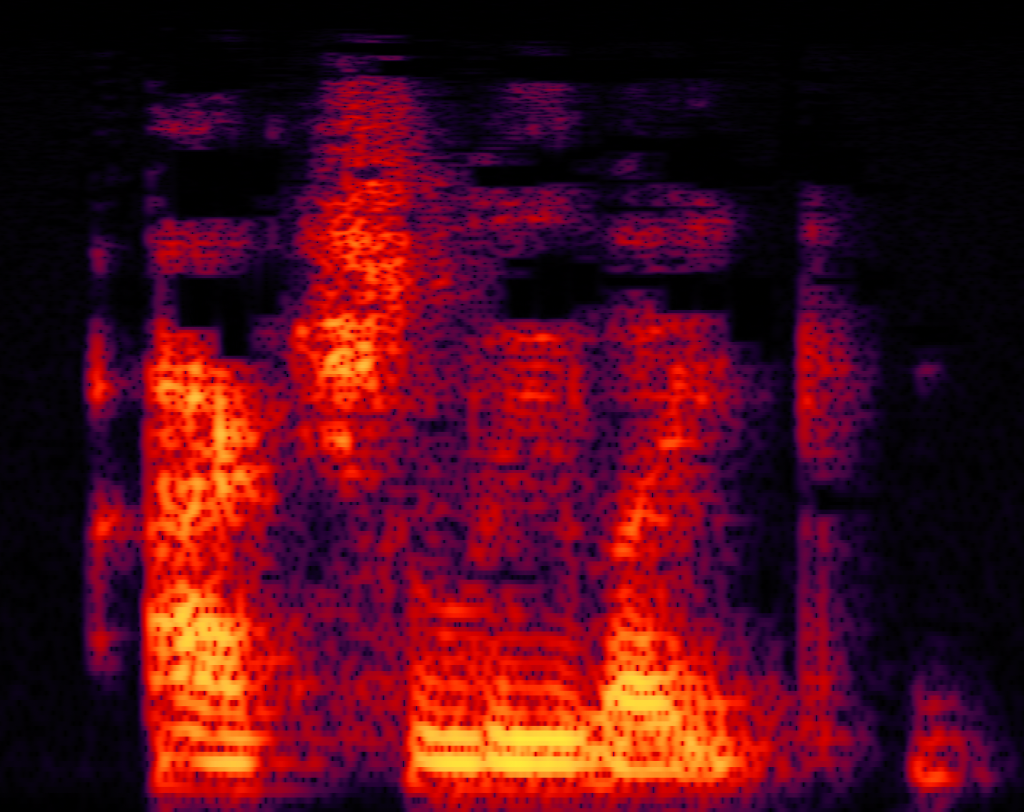
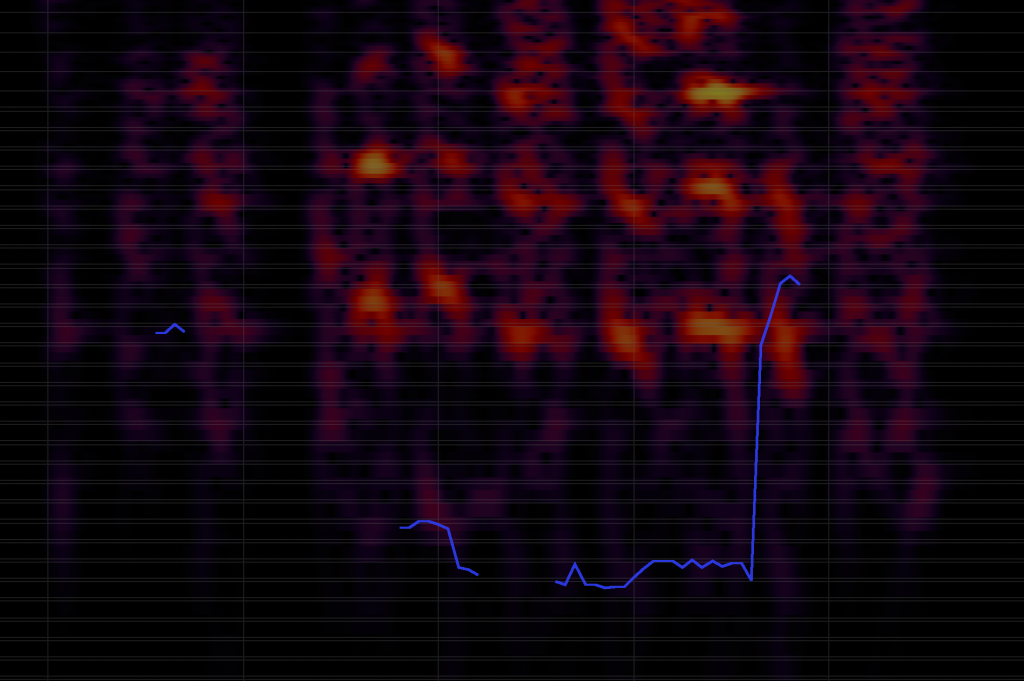
Daily Making Process: Discovery and Themes of Dualism
After about three days of experimenting, I made a successful discovery that became the focal point of the project. The discovery was that with some minor manipulation and perspective change some of these spectrums created these ghostly, archival and human looking faces/masks. This led me to create a 12-day practice based around making these faces/masks and collectively calling them “Ghosts of a Grieving Consciousness”.
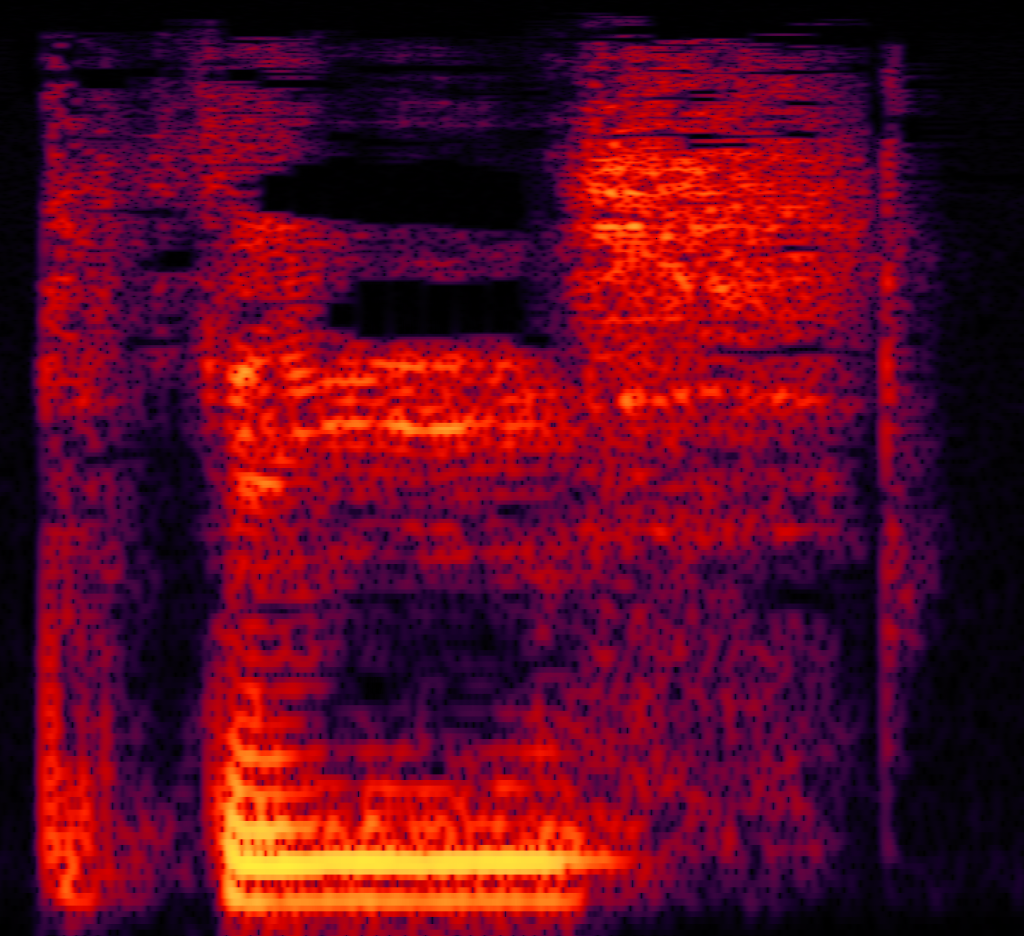
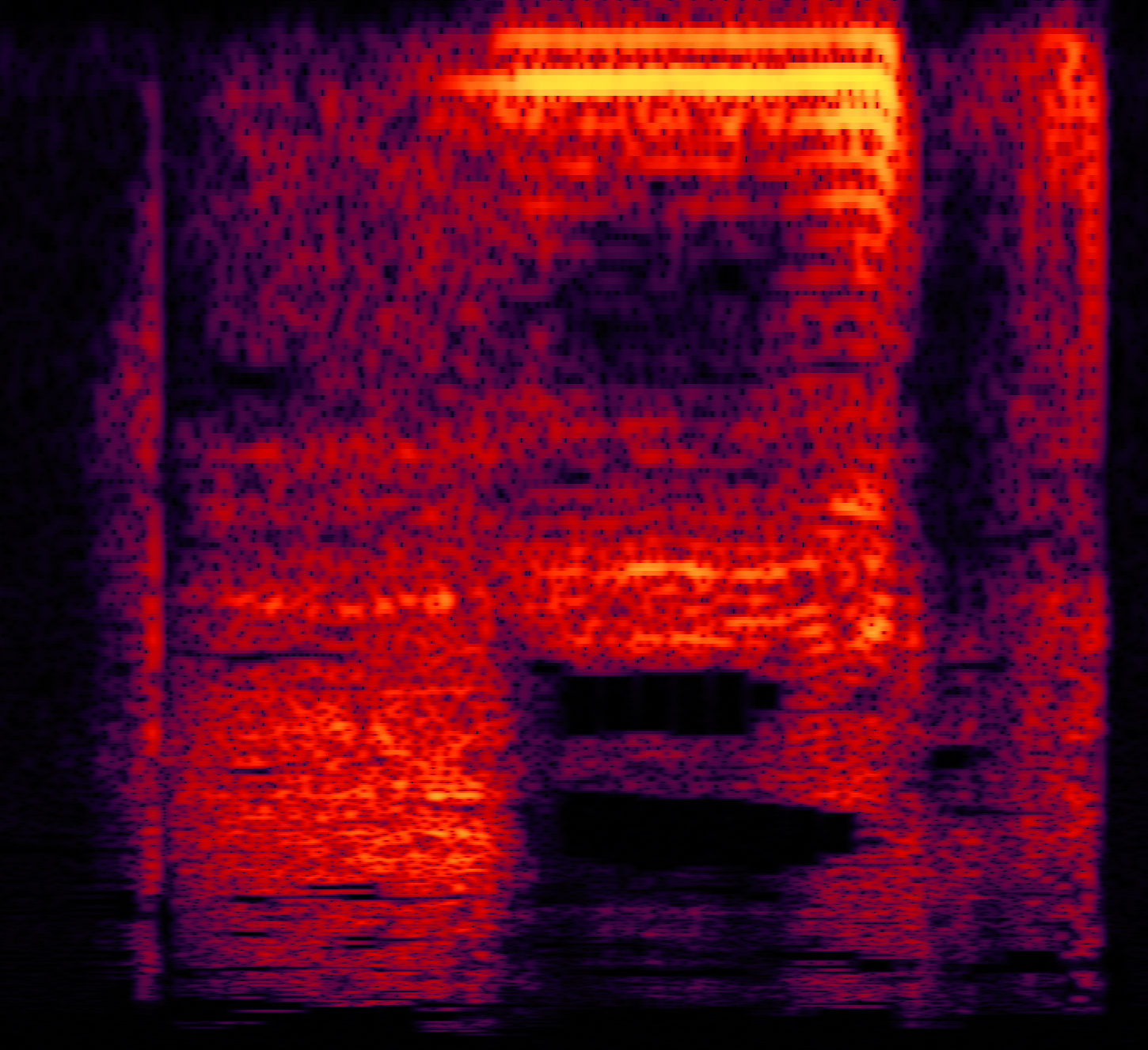
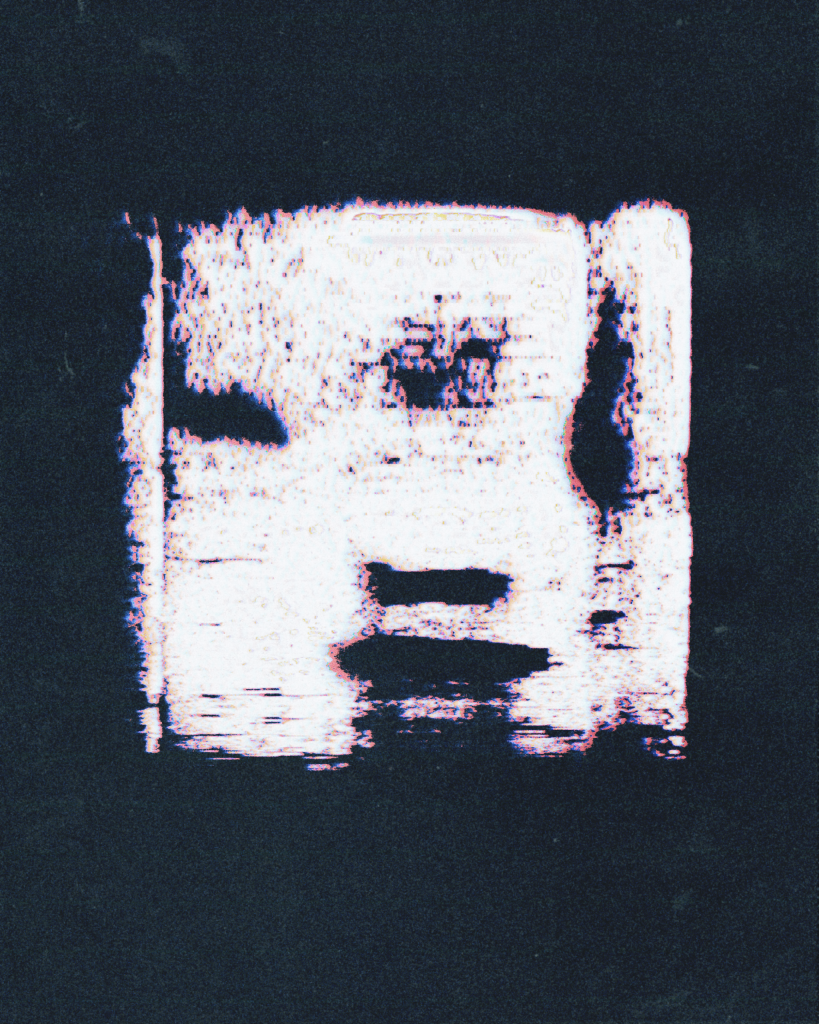
It is important to note the connection to the concept of Dualism in my work.
“Dualism is the theory that the mental and the physical – or mind and body or mind and brain – are, in some sense, radically different kinds of things.”
I found myself toying with this idea in the process of this project. The way I attempted to disconnect my mind from my physically body, to isolate a conversation within my deep consciousness, to me, fits right into the concept of dualism. I base this comparison heavily on my first exposure to dualism which was in Mamoru Oshii’s masterpiece “Ghost in the Shell”.
Ghost In the Shell
Mamoru Oshii 1995
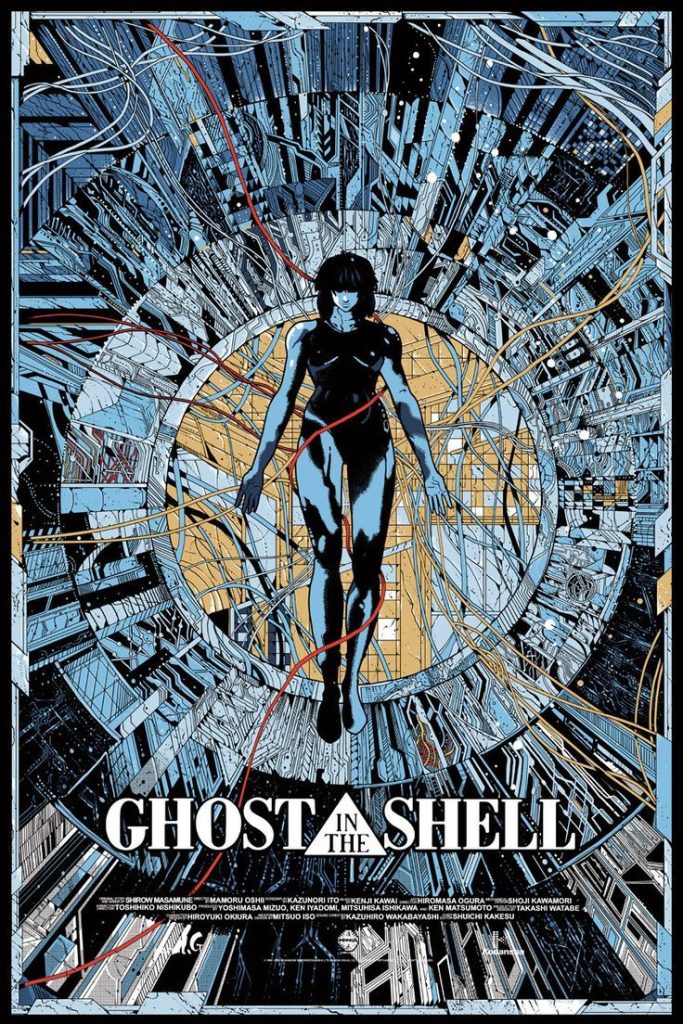
Ghost in the shell to me is one of the greatest animated films of all time. Serving as a huge inspiration to similar movies like the Matrix, the movie tackles complex themes of identity, dualism and in a world full of digitally and mechanically modified humans what does it mean to be human. Dualism plays an enormous role in this movie as the main character Major Motoko Kusanagi, or just “Major” struggles with her identity, trying to figure out what makes her machine or human. The idea of her soul or “ghost” being the only organic thing about her as she is almost all circuitry and machine really made me think about and reflect on how to disconnect my own brain or consciousness from my physical body.



Ghosts of a Grieving Consciousness
Pictured is the entire gallery of my daily making practice titled “Ghosts of a Grieving Consciousness”.
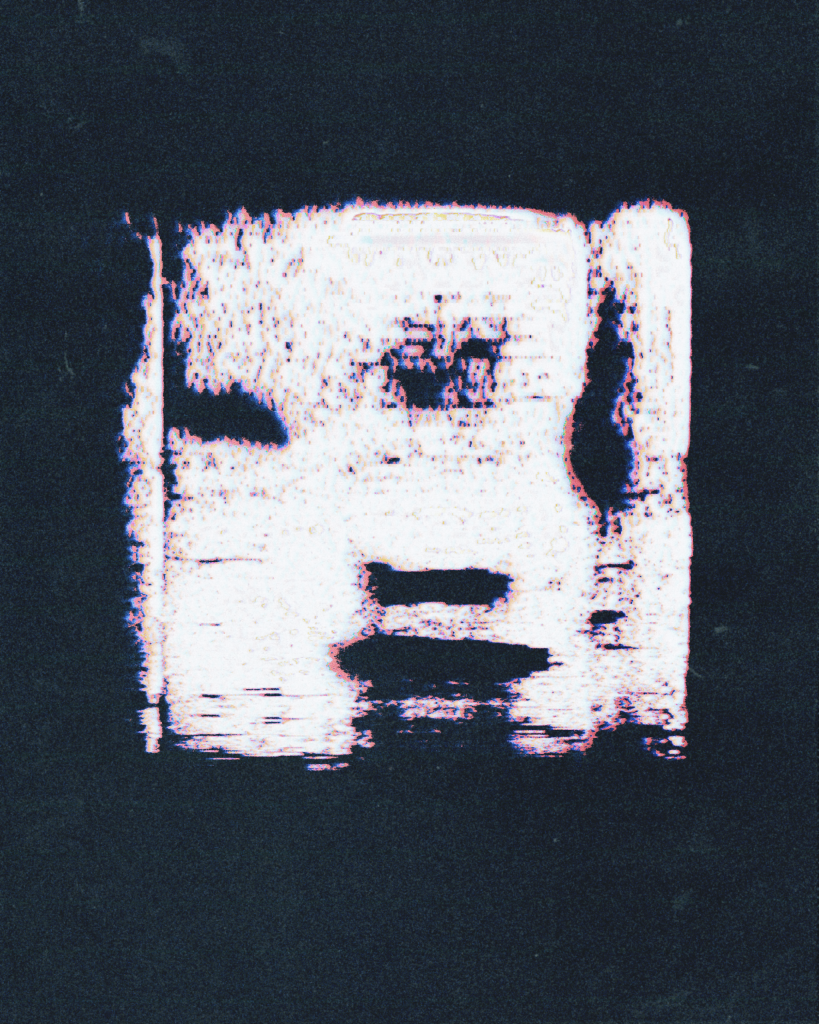
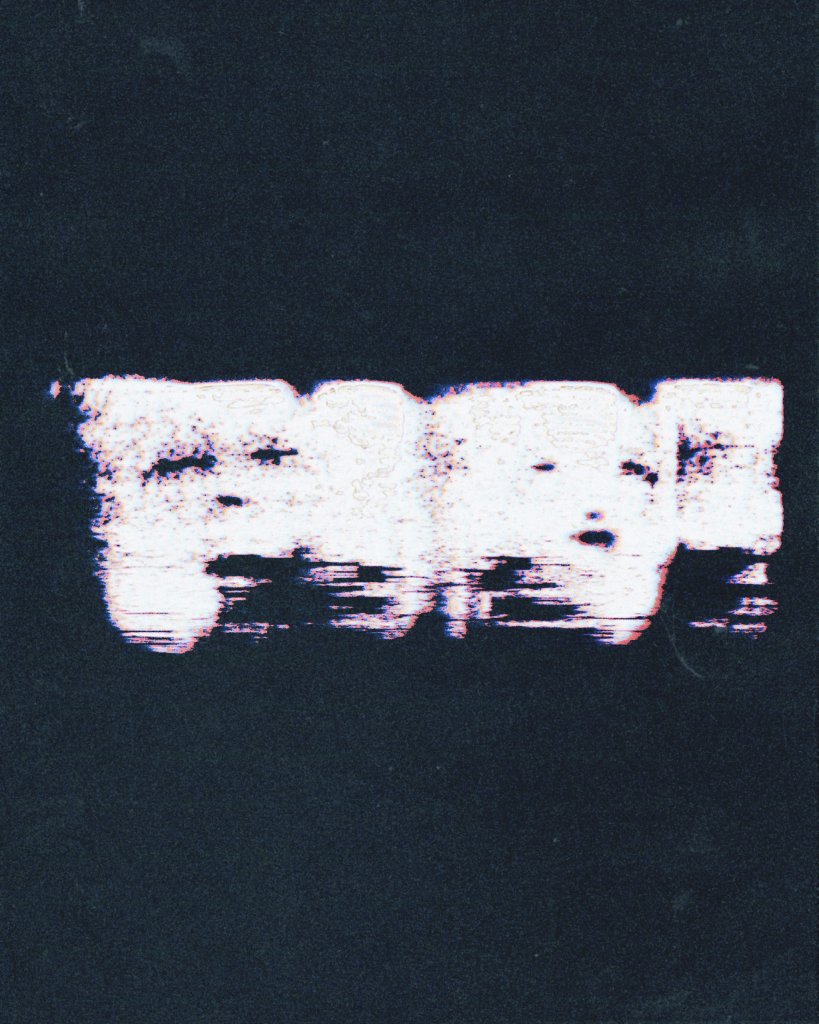
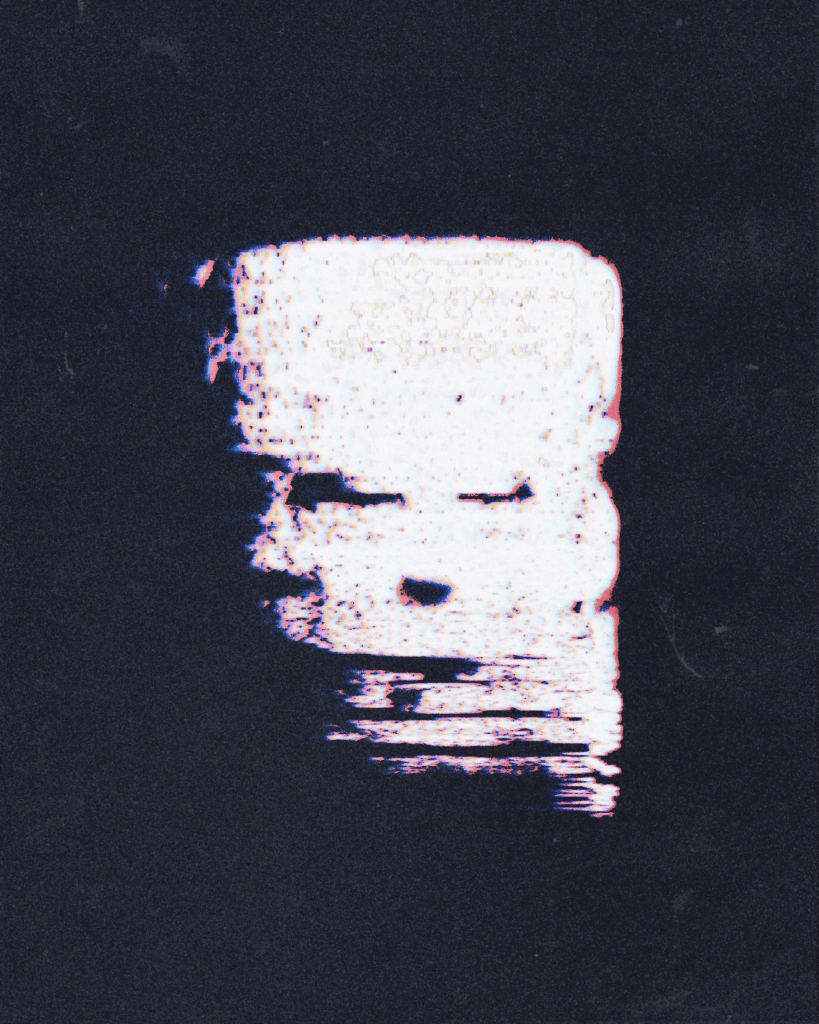
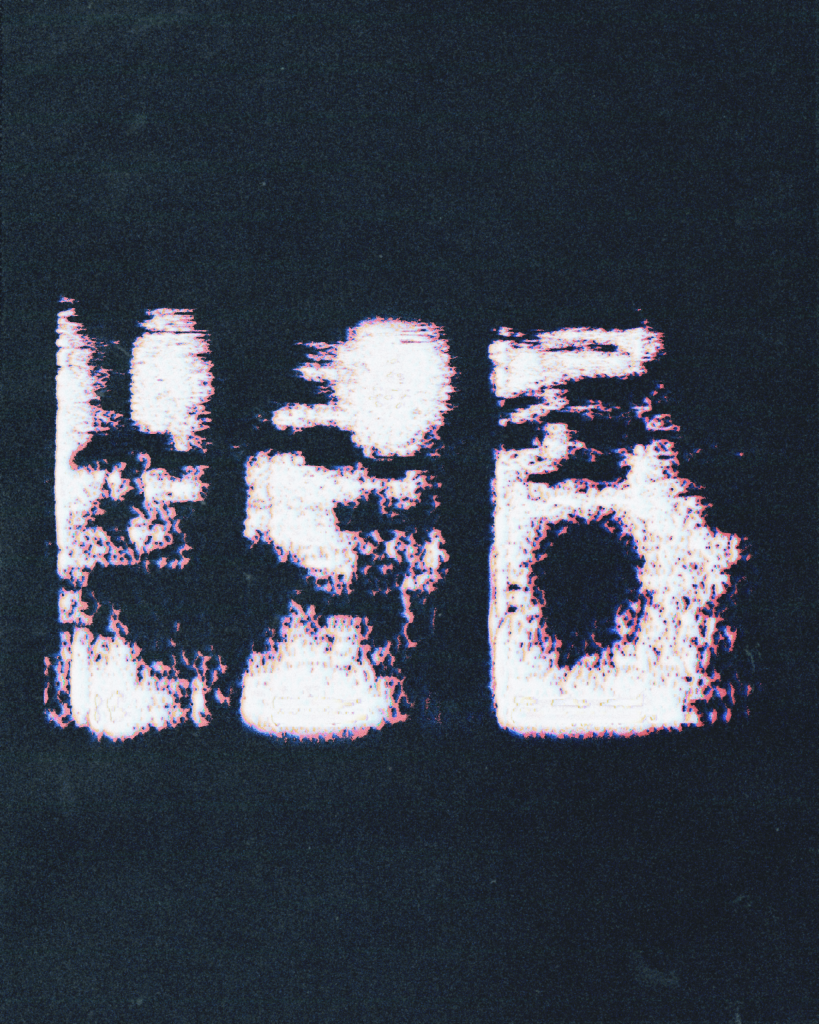
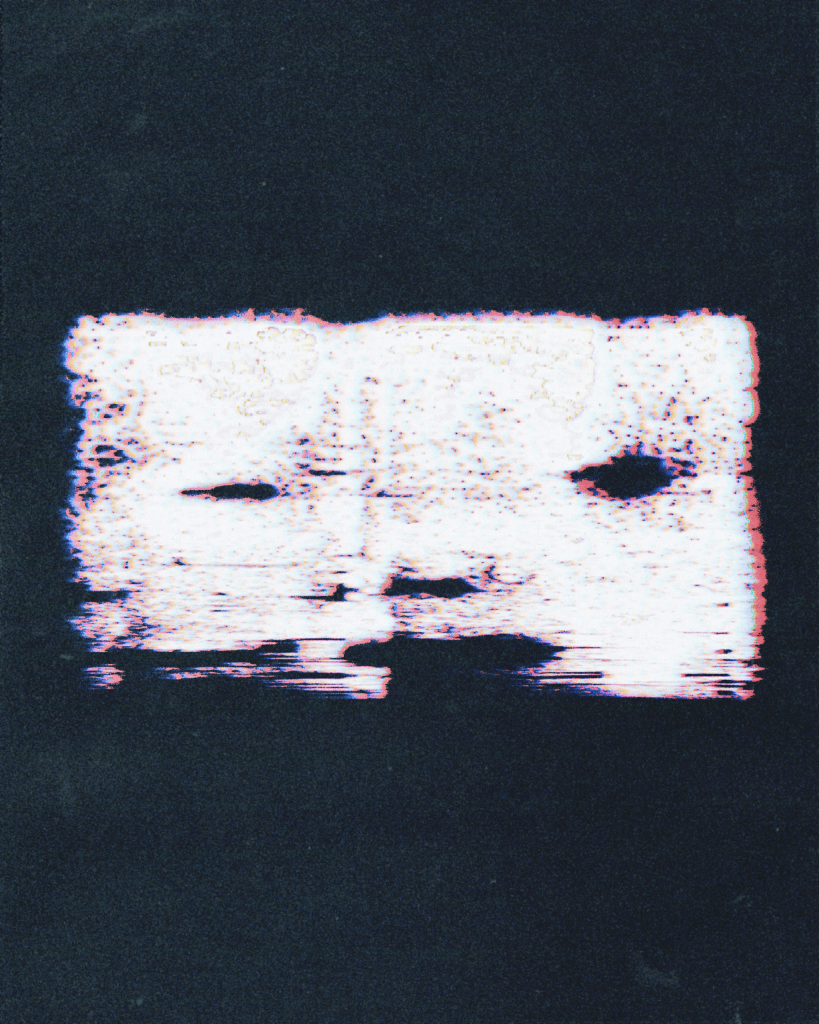
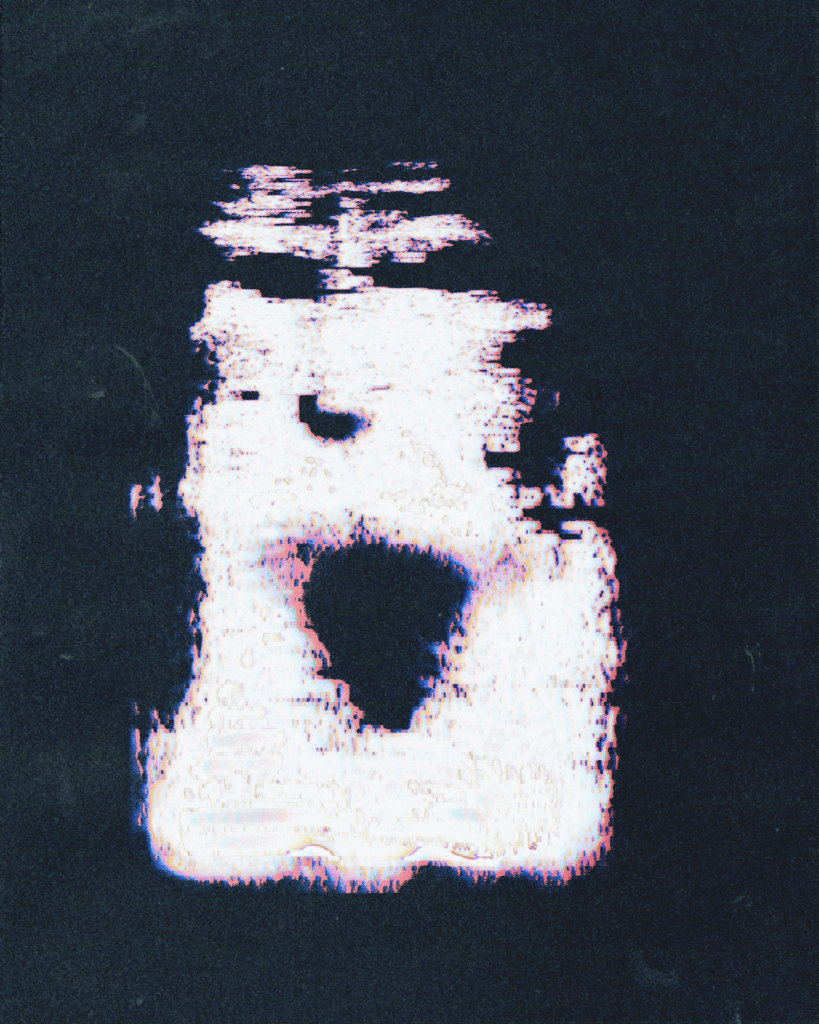
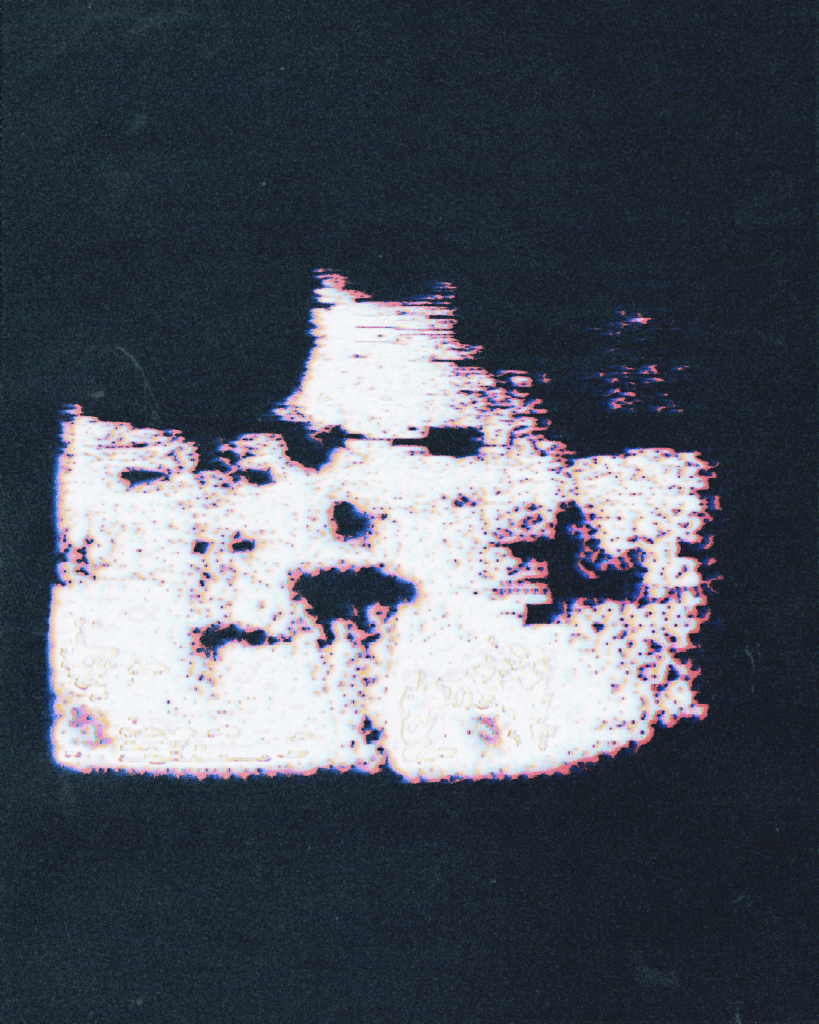

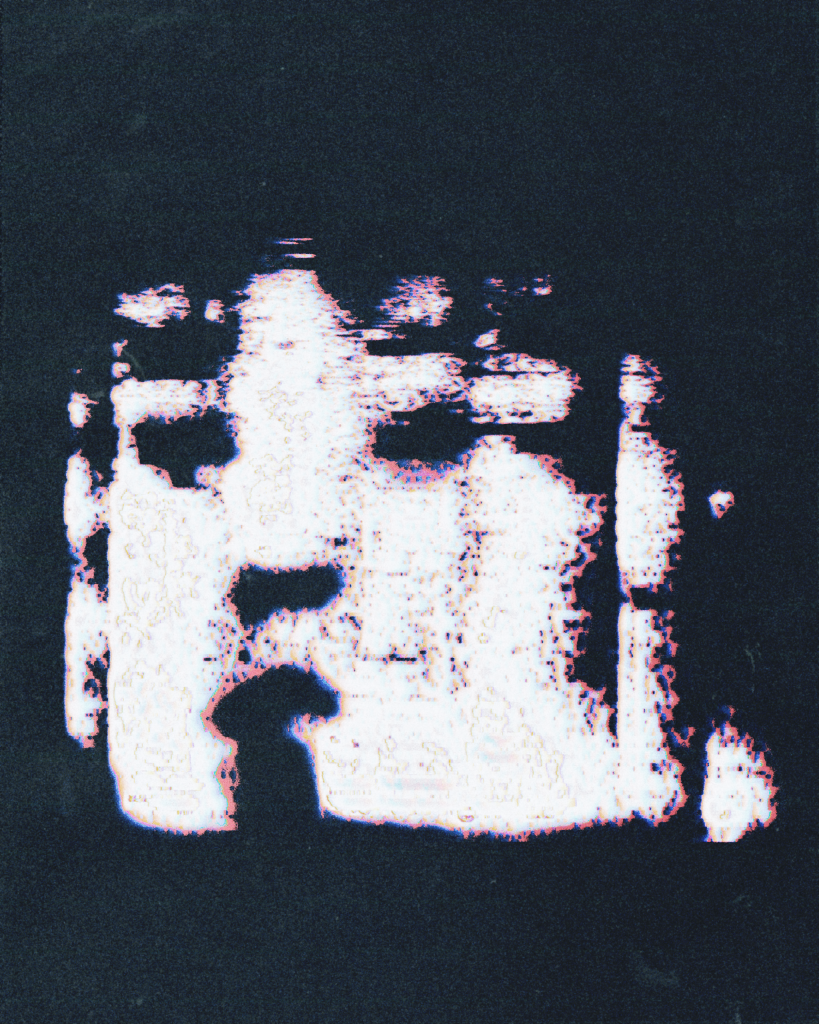

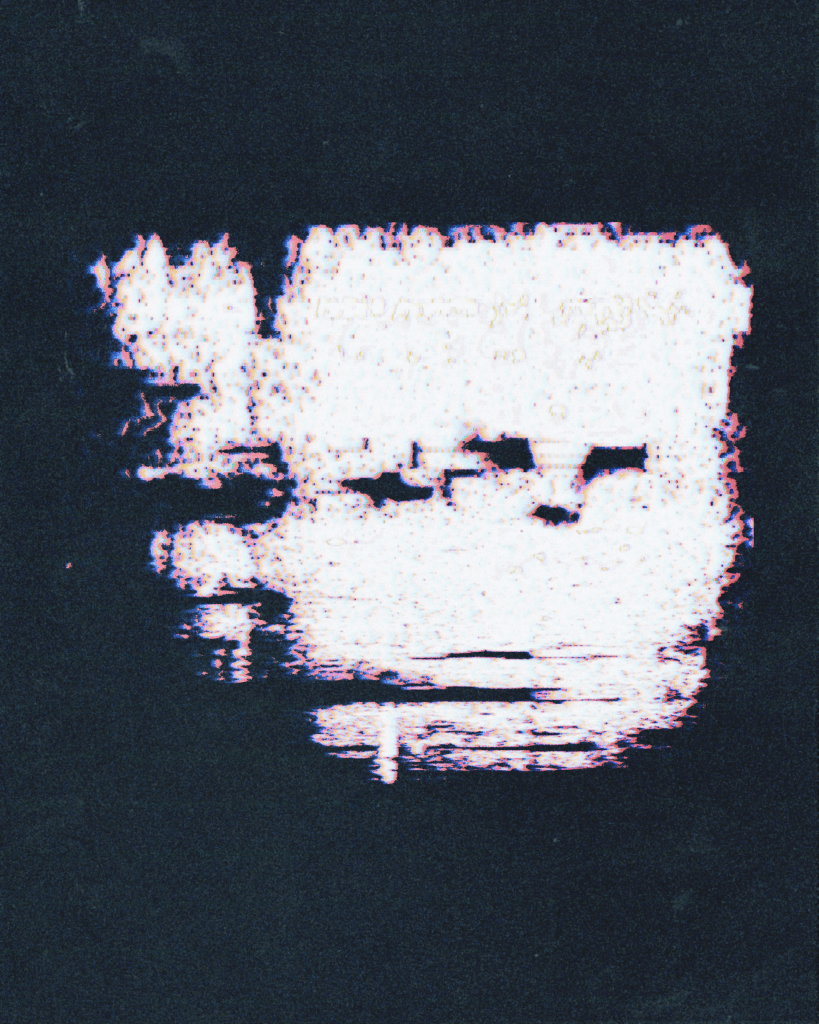
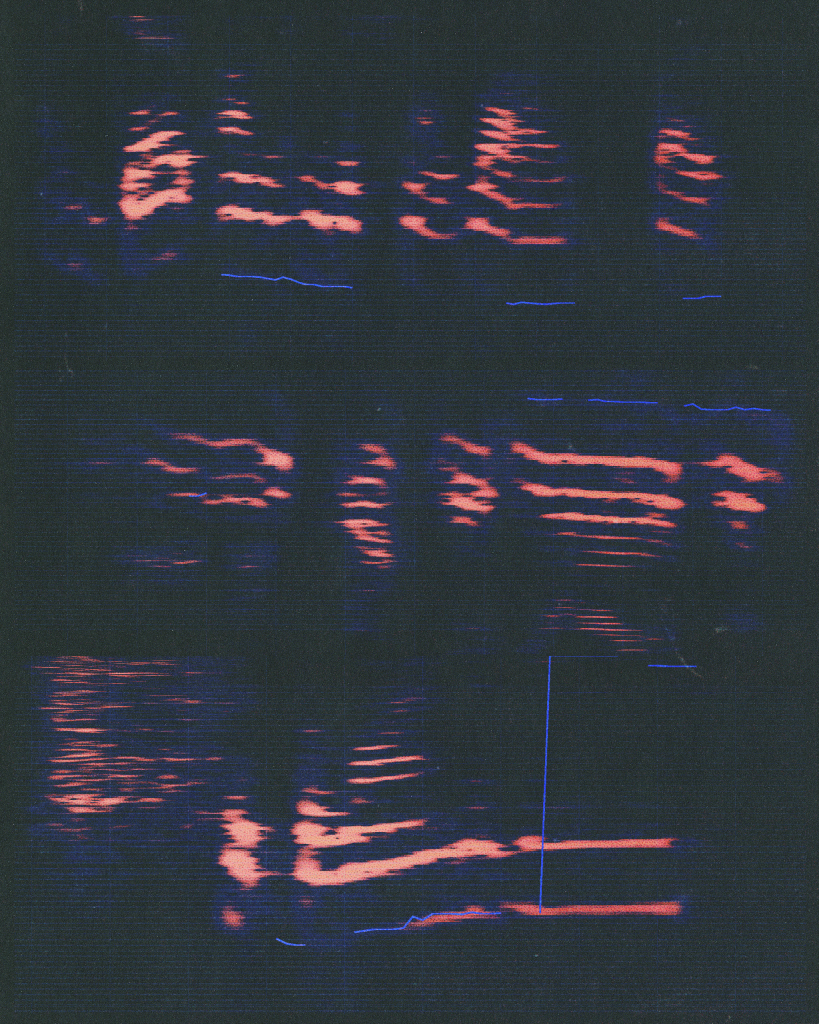
Reflection and Future
This project is a huge milestone in my personal creative life. Ever since a child, my creative endeavours were incapsulated by the idea of “cool”. I would do my best to replicate or create things that I, or others, thought was cool. This is literally the first time I have decided to be transparent emotionally in my practice. With the recent passing of my Mom, I have been desperate to let out my emotions in some way. Taking this opportunity to take something as gargantuan as grief and focus it into a project to where I can show others how I am feeling but also interact with my own subconscious is beautiful. My interest and interaction with complex sound visualization is exactly what I was hoping to explore in this prompt without even knowing it. I feel very satisfied with the present outcome of this project.
There is a future element with this project. I have hopes of creating 3D versions of these masks. I believe taking something from the consciousness, then visualizing it digitally and further realizing it in the physical world, could be an extremely powerful and an almost paradoxical future of this project.
